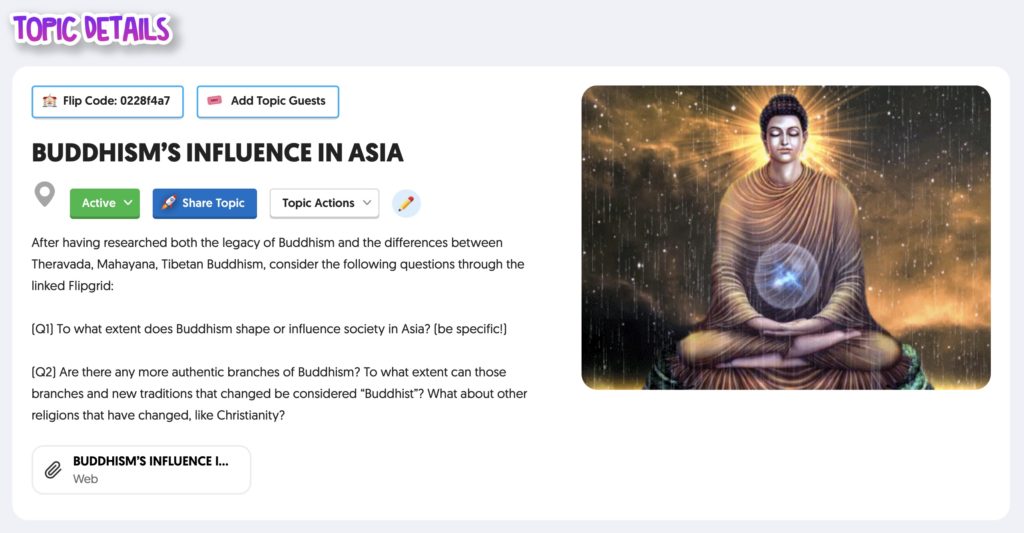ONLINE DISCUSSION AND BUDDHISM: FLIPGRID & FORMATIVE ASSESSMENTS

AP World History has just gone through a significant redesign this year that has removed a lot of content and asks students to go deeper in matters related to global modern history.
While Many teachers are understandably frustrated, as I have been at times in the last few months, I am taking this as an opportunity to evaluate and reflect on the types of assignment and assessments I give. In particular, I rarely give much attention to the history of Asia.
Whether intentional or subconscious, I tend to skirt around or speed through content areas that seem less important (read: not as interesting to me and content areas I know little about). Now that the overall course content has been halved, I need to develop some engaging learning activities and assessments in key areas of Asian history.
To that end, I have developed the first of several assessments in this content area. I developed a formative assessment based on the standard KC-3.1.III.D.ii,
“Buddhism and its core beliefs continued to shape societies in Asia and included a variety of branches, schools, and practices.”
This standard invites students to reflect on the shaping power of Buddhism in various Asian regions, in particular, Tibet, China, Japan, and South East Asia. This standard focuses on Cause and Effect, as well as Continuity and Change—critical Reasoning Skills AP wants students to develop.
Students are instructed to research the above standard or read two selections from the course textbook. Following their research, students will respond to the following questions:
(Q1) To what extent does Buddhism shape or influence society in Asia? (be specific!)
(Q2) Are there any more authentic branches of Buddhism? To what extent can those branches and new traditions that changed be considered “Buddhist”? What about other religions that have changed, like Christianity?
 Loading...
Loading...
How students respond to these prompts is where this assessment gets fun! Students will use the verbal collaboration tool Flipgrid, a platform that functions as an educational Snapchat. Students will create video responses and be able to add stickers and apply filters to their videos using various tools.
Following their submission to Flipgrid, students are instructed to interact with their peers. In particular, students will conduct an online asynchronous discussion/debate concerning their responses to Q2.
To visit the Flipgrid webpage itself, click here.
By watching their peers’ videos and discussing the ideas, they will learn new areas of content. Student A may have focused on Tibetan Buddhism, while student B focused on Chinese Buddhism. Both will learn far more from each other as they interact through this assessment than if they had written a short essay in a traditional format.
I am a passionate advocate of Flipgrid, and I love using it for Metacognitive reflections and sharing summative projects. I believe that expanding into formative assessments and encouraging students to interact and discuss will increase overall learning.
Since I cannot and do not want to be the source of all information, empowering students’ voices is vital to student success.

